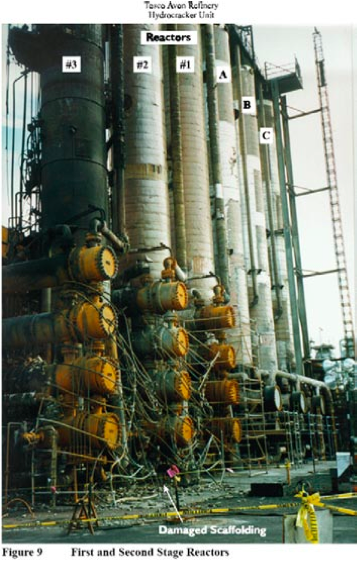A Brief Operating History of Pressure Vessel and Piping Bolted Joints
Pressure vessel and piping bolted joints have existed, in one form or another, since the introduction of pressure vessels during the industrial age. A design method for bolted joints was introduced into the 1934 ASME pressure vessel code, was updated in the 1943 code and has remained essentially unchanged since that time. The present design method, by self admission in Appendix S of ASME VIII, Div. 1 (ASME [1]), does not analyze most of the actual operational loads on the joint and, until the introduction of ASME PCC-1 (ASME [2]) in 2000, there was no official guidance on the assembly or operation of bolted joints. This is in spite of the fact that throughout history there have been major incidents involving the failure of bolted joints. The ICI risk management manual (ICI [3]) lists an estimate of the “average” number of joint leaks as 5 per year per plant. In most refineries, this is probably a low- ball estimate and probably actually only covers major leakage incidents. In a study of offshore platforms for the UK HSE (HSE [4]), bolted joint leakage was the leading cause of loss-of- containment reports with a total of 174 incidents versus the next important contributor (corrosion and erosion) at 171 incidents. Given that the process conditions offshore are generally kinder on bolted joints (lower pressure and temperature conditions), this is a fairly decent indication that estimates for bolted joint leakage on onshore equipment is an accepted occurrence that largely goes unrecorded.
A search of the Chemical Safety Board’s website (www.csb.gov) reveals only a total of 22 documents containing the keywords “gasket” or “flange”. None of the accident investigations among these cases list the leakage of bolted joints as causing the incident A similar query on the EPA website (www.epa.gov) for accident investigation reports, with the same keywords, also results in 22 documents and, once again, none of the incidents list leaking bolted joints as causing the incident. So, from that one might consider that the apparent disregard for bolted joint leakage might be justified and assume that, in spite of the fact we know joint leakage occurs, all joint leakage is benign in nature. But is this really the case?
Modern-Day Paradigms
If you scratch a little further below the surface what is revealed is not the low risk associated with bolted joint leakage, but in fact an industry paradigm where bolted joint leakage is considered an acceptable part of plant operation. This is highlighted in the 2006 BP US refinery safety review panel report (Baker [5]), where it is stated at one point that a fire caused by flange leakage was a “...minimal impact, non-event type of fire... one that we have seen many times over the years on numerous flanges and connections on our coker.”. One can only imagine what the difference in attitude would have been if this fire had resulted from loss of containment on a weld, for example. The perception that bolted joint leakage is part of an "every-day operating fact of life" seems particularly prevalent in the refining industry.
Nowhere is this more evident than in the EPA report [6] on the Tosco Avon Refinery 1997 incident in their hydrocracker unit that led to one operator death, 46 injuries and extensive damage to the refinery (Fig. 1). The cause of the explosion and fire was a run-away temperature spike in a reactor and subsequent rupture of effluent piping due to the high process temperatures (1400°F). The contributing causes identified in the report include inadequate plant maintenance (including flange leakage), however the recommendations for mitigation of similar incidents focus on management philosophy, operator training and instrumentation system design and maintenance. This is somewhat understandable, given the major contribution that failure of those systems played.However, if the paradigm of acceptance of flange leakage had not been as prevalent, then it is likely that the report would have been stronger on recommending elimination of bolted joint leakage.

In this tragic incident the precipitating cause was, in fact, flange leakage. The report makes it clear that leakage of the feedeffluent exchangers on the unit was an accepted part of plant operations. In the days preceding the explosion, the plant operators struggled with leakage of the exchanger joints and employed steam rings and on-line leak sealing clamps in an attempt to "mitigate" the problem. This was normal operating practice at the refinery (in spite of the likelihood of flange leakage being listed as "infrequent" in the plant HAZOP). However, the leakage on one exchanger became so bad that the operators cut back the feed to one of the hydrocracker reactors in an attempt to stop the leak and allow application of an on-line leak sealing clamp to the leaking joint. In cutting back the flow to the reactor they unbalanced the process, which led to the reaction run-away that caused the pipe failure. One could surmise that if the exchanger joints had not leaked, then the reactor flow would not have been diverted, reaction run- away would not have occurred and the operator would still be alive today. Therefore, at the least, flange leakage should have been identified as one of the major contributors to the incident.
















Comments and Discussion
Add a Comment
Please log in or register to participate in comments and discussions.